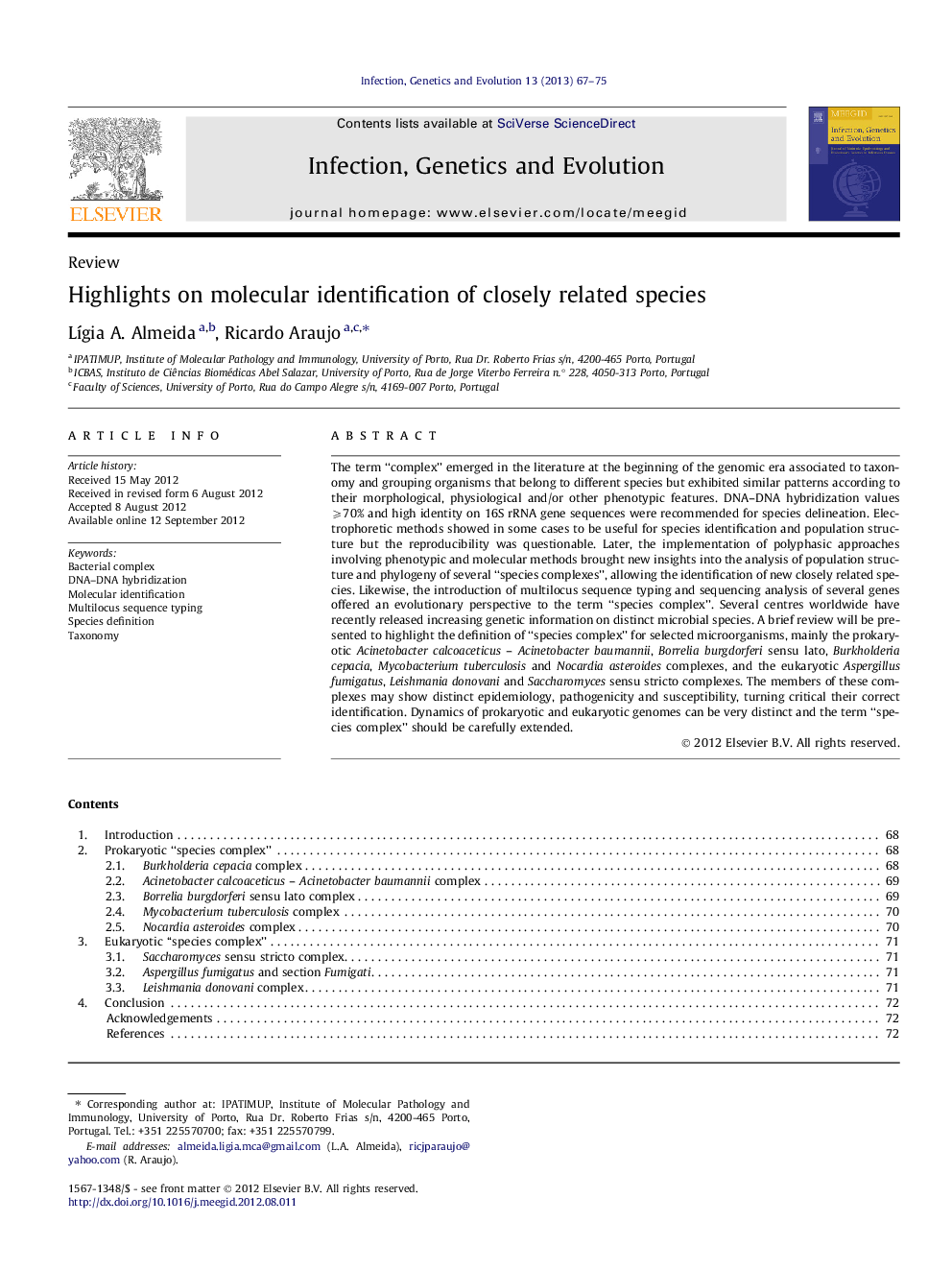| Article ID | Journal | Published Year | Pages | File Type |
|---|---|---|---|---|
| 5910994 | Infection, Genetics and Evolution | 2013 | 9 Pages |
The term “complex” emerged in the literature at the beginning of the genomic era associated to taxonomy and grouping organisms that belong to different species but exhibited similar patterns according to their morphological, physiological and/or other phenotypic features. DNA-DNA hybridization values ⩾70% and high identity on 16S rRNA gene sequences were recommended for species delineation. Electrophoretic methods showed in some cases to be useful for species identification and population structure but the reproducibility was questionable. Later, the implementation of polyphasic approaches involving phenotypic and molecular methods brought new insights into the analysis of population structure and phylogeny of several “species complexes”, allowing the identification of new closely related species. Likewise, the introduction of multilocus sequence typing and sequencing analysis of several genes offered an evolutionary perspective to the term “species complex”. Several centres worldwide have recently released increasing genetic information on distinct microbial species. A brief review will be presented to highlight the definition of “species complex” for selected microorganisms, mainly the prokaryotic Acinetobacter calcoaceticus - Acinetobacter baumannii, Borrelia burgdorferi sensu lato, Burkholderia cepacia, Mycobacterium tuberculosis and Nocardia asteroides complexes, and the eukaryotic Aspergillus fumigatus, Leishmania donovani and Saccharomyces sensu stricto complexes. The members of these complexes may show distinct epidemiology, pathogenicity and susceptibility, turning critical their correct identification. Dynamics of prokaryotic and eukaryotic genomes can be very distinct and the term “species complex” should be carefully extended.
⺠Identification of related species within complexes is challenging. ⺠New species have been defined taxonomically even without consensus criteria. ⺠Polyphasic approaches brought new insights into “microbial species complexes”. ⺠MLST and sequencing analysis of genes may identify closely related species. ⺠High throughput of gene sequences facilitate studying closely related species.
